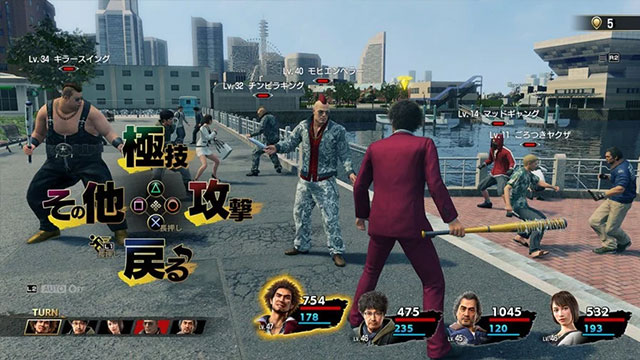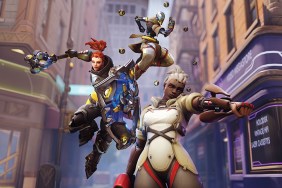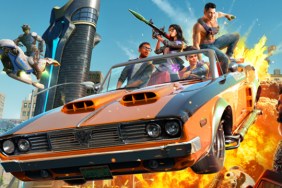If you haven’t been paying attention to the hints laid down by Ryu ga Gotoku Studio then the announcement that Yakuza 7, which is releasing as Yakuza: Like a Dragon in the West, would be a turn-based role-playing game was quite the shock. After all, the gameplay for the long-running Japanese series has stayed rather stagnant since its beginnings on PlayStation 2. The series has always featured Kazuma Kiryu, and sometimes his friends, beating up a bunch of gang members and ne’er-do-wells with nothing other than their fists and the object-filled environment around them. However, those that have been paying attention will know that the Japanese studio actually premiered the first look at Yakuza 7‘s gameplay one year ago in what was claimed to be an April Fool’s Day joke. Much like Conan Chop Chop and other goofs from developers, it wound up being revealed as the real deal when the time was right. While a lot of fans are upset about the change in direction, the developer’s track record, and the fact that the combat has never been the best part of the prior Yakuza games, should inspire more confidence in the move.
Combat has never been all that great in Yakuza

One reason that makes the adjustment from being an action brawler to a turn-based RPG feel odd to many players is that the Yakuza team has spent a lot of time upping the quality of its combat lately. As the recently released Yakuza 3 Remastered shows, the combat in the series has always been rough around the edges. A lot of its charm comes not from the intricacies of combinations, but rather from the ridiculousness of the heat-powered special moves. Kiryu using a random bicycle on the street to smash some two-bit thug’s head in was entertaining, but beating up a damage-sponge boss with a huge health bar was not. For far too long, the challenge in the series felt more artificial than anything, as deaths only occurred if you forgot to stock up on health items rather than being an actual test of skill.
ALSO: Yakuza 3 Remastered Review | Revisiting Okinawa in style
Yakuza 0 saw the first major reinvention of combat in the series, as it included multiple combat styles for players to choose from. These ranged from your standard brawling that you would expect from a brute like Kiryu to Goro Majima using his beloved bat to knock some sense into foes and even using a breakdance style of martial arts in order to crack some skulls. These were fun additions and the combat continued to be refined in the decade-plus since the series debuted.
Yakuza 6: The Song of Life took it a step further as it introduced a new engine: the same one that Judgment and Yakuza Kiwami 2 used that allowed for a wider range of interaction with the environment. No longer were players transitioned into battles and blocked off from going elsewhere in the city, they could battle foes anywhere, and even destroy the insides of shops if they wanted to. However, there still wasn’t a ton of depth to the combat. Sure, there were plenty of skills to unlock and different move variations that players could learn over time, but Yakuza has always been more of a brawler more than anything else. Players mash on the two attack buttons, occasionally dodge out of the way, and keep on going. For as much fun as the combat allowed for players to have, it was always a means to an end rather than a highlight of the experience.
Everything you love about Yakuza will still be there

What stuck out about Yakuza was its storytelling, sense of humor, and how it balanced the ridiculous with heartfelt moments. I once praised Ryu ga Gotoku Studio for simply going for it and never half-committing to any idea the team had. In Yakuza 5, the developer put in an extended prison break sequence, replaced street fights with dance battles for a section of the game, and allowed players to operate a taxi and obey Japanese traffic laws. There wasn’t a great reason for any of these things to be included, and the game would’ve been fine without it, but the developer went on and did it anyhow and the games were better for it. So, when the Yakuza team reveals that it is transitioning to a RPG, it’s impossible to not have some confidence that the studio will completely dive into that aspect.
The best parts of Yakuza‘s combat will still be present here too. As seen in the April Fool’s Day teaser and the Yakuza 7 reveal trailer, the turn-based gameplay still has the hilarious set-pieces that made combat encounters memorable. All that has changed is that players are selecting the options through a menu rather than walking over to a traffic cone to pick it up and then pressing triangle in order to complete a heat action with it. It’s effectively turning one of the series’ biggest flaws — the repetitive combat — into a potential strength depending on how enjoyable the RPG portion winds up being. Either way, we’ll still get the same type of Yakuza game that players love with a winding story full of hilarious side quests and gang-related violence. It’s simply just a different way to experience it.
With over seven main entries in the series, and even more if you include the multiple spin-offs like Yakuza Ishin and Judgment, it is refreshing to get a different take from the Japanese studio and see a developer experimenting rather than sticking to a tried and true formula. Players should be applauding developers that take these sort of risks rather than bemoaning any sort of change. This is the perfect time to do such a move due to the series switching protagonists, as a RPG-style combat system would have never made sense with a brute like Kiryu. Instead, Yakuze: Like a Dragon stars the Dragon Quest-obsessed Ichiban Kasuga. It’s only fitting that he’d handle differently and now the developers get to try something new and make Ichiban’s first adventure feel wholly unique rather than make a standard Yakuza game without Kiryu in it.







